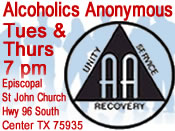March 19, 2019 - Spring often ushers in an eagerness to head outside for DIY projects and fun activities.
Whether it’s mending a fence, planting a garden or hosting a backyard barbecue, spring is the season many get out of the house to enjoy the sunshine.
Southwestern Electric Power Co. (SWEPCO) reminds customers to take caution when working or playing outside near power lines.
Here are 14 outdoor safety tips to keep in mind this spring:
Outdoor projects
- Keep ladders and tools at least 10 feet from power lines. If a ladder or piece of equipment touches an overhead line, both you and the equipment can become a path for the electricity and cause serious injury or death.
- Contact SWEPCO at 1-888-216-3523 if a project requires you to work near power lines. For example, if you need to trim a tree near the overhead service line to your house, SWEPCO can de-energize the line for you.
- Use a clean, dry wooden or fiberglass ladder anywhere near electric lines. Never use a metal ladder.
- If you’re installing or removing an antenna, make sure it is at least 1.5 times its total height away from power lines. If an antenna starts to fall, let it go and stay clear of it.
- Overhead lines are not insulated. Never touch a wire.
- If you’re planning a house addition, envision where the roof will be in relation to the power line. If necessary, talk with the power company about moving the line before you begin.
Flying kites or putting up balloons
- Never use wire, tinsel or any metal in kite construction or as string – they can conduct electricity.
- Never fly a kite near power lines. Electricity always takes the path of least resistance to the ground. It could go through the string to your body. Choose a wide-open field to fly kites.
- If a kite is caught in a power line, leave it there. Parents should call SWEPCO for assistance at 1-888-216-3523. Only properly trained personnel with safety equipment should remove the kite.
- Do not fly kites on rainy days where there is a possibility of lightning using the string as a conductor to reach the ground. Wet strings are good conductors of electricity.
- Be cautious with balloons around power lines. Metallic coatings on Mylar helium balloons can damage SWEPCO’s electrical system and cause power losses when they come in contact with lines.
On the lake
- Look up and check for overhead power lines when sailing.
- Always be aware that the water level may have changed on the lake due to rainfall, bringing masts closer to power lines than expected. Look for posted warning signs about overhead lines that may prohibit sailboats on the water.
- Avoid all line contact with the boat mast or antennae while rigging, launching or sailing.
About Southwestern Electric Power Co. (SWEPCO)
SWEPCO, an American Electric Power (AEP: NYSE) company, serves 535,000 customers in western Arkansas, northwest and central Louisiana, northeast Texas and the Texas Panhandle. SWEPCO’s headquarters are in Shreveport, La. News releases and other information about SWEPCO can be found at SWEPCO.com.
About American Electric Power (AEP)
American Electric Power, based in Columbus, Ohio, is focused on building a smarter energy infrastructure and delivering new technologies and custom energy solutions to our customers. AEP’s more than 17,000 employees operate and maintain the nation’s largest electricity transmission system and more than 219,000 miles of distribution lines to efficiently deliver safe, reliable power to nearly 5.4 million regulated customers in 11 states. AEP also is one of the nation’s largest electricity producers with approximately 32,000 megawatts of diverse generating capacity, including 4,300 megawatts of renewable energy. AEP’s family of companies includes utilities AEP Ohio, AEP Texas, Appalachian Power (in Virginia and West Virginia), AEP Appalachian Power (in Tennessee), Indiana Michigan Power, Kentucky Power, Public Service Company of Oklahoma, and Southwestern Electric Power Company (in Arkansas, Louisiana, East Texas and the Texas Panhandle). AEP also owns AEP Energy, AEP Energy Partners, AEP OnSite Partners and AEP Renewables, which provide innovative competitive energy solutions nationwide.









